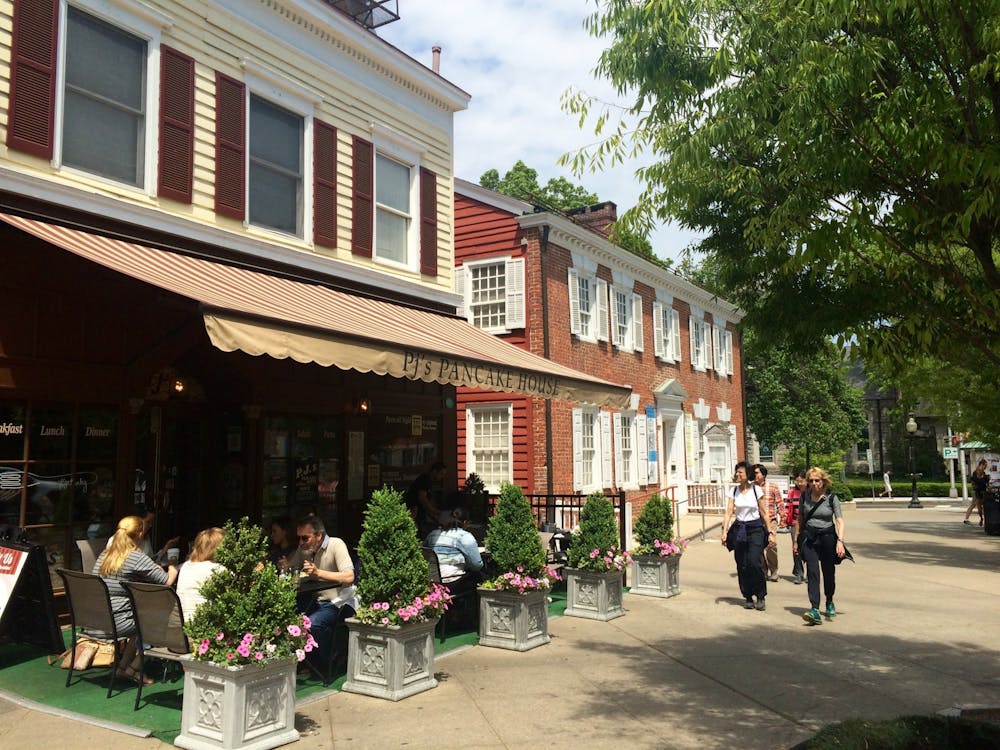As we neared our destination, the grand sight came into view — Volcán Arenal. The volcano towered above all else, and its rocky, conical shape created a striking juxtaposition against the smooth green brush that filled the landscape. As the car continued, the landscape transformed from forest to fields to homes, before the town finally came into sight. From the bright buildings to the vibrant townspeople, a rush of color filled the scene. We had arrived.
This past March, I was fortunate enough to travel to Costa Rica with my family. It was my first time traveling to Central America, and I had heard much about the magnificent Costa Rican climate, nature, and culture, so I naturally couldn’t wait to escape the dreary early spring of Boston, Mass. The high point of the trip was my stay in La Fortuna, a small town situated just outside one of Costa Rica’s premier volcanos. Here, we spent much time exploring the national park and rainforests, but some of the most memorable moments came from the simple experiences along the streets of La Fortuna.
Route 142, the main street of La Fortuna, cut through the center of town and functioned as the town’s heart from which small alleyways and avenues broke off from. Small restaurants, shops, and hotels ran along the sides, and a stream of tourists and townspeople always filled the empty spaces. A small park and church lay at the center of La Fortuna, and a sports complex and school were located a few minutes’ walk away from the town’s center. Despite the simplicity of the town, there was a unique story at every corner.
The church and park were the town’s social center, where one could often find students eating a picnic after classes or couples taking a stroll late in the evening. This locale represented the lifestyle and aura of La Fortuna — easygoing and relaxed. Further up Route 142 towards the restaurants and shops, there was an open market on the weekends. Farmers from the local fields and forests brought in fresh fruits and vegetables, and the town center had a hustle-bustle liveliness to it then. Among the more curious things in town was a car equipped with a large speaker on its roof. This car drove around town blasting radio advertisements, and its presence seemed common since it had a company name on its side doors and was present every day.
Once, next to a restaurant, I saw a man fixing a brightly colored car straight out of the 1960s or 70s. The man didn’t seem to be a mechanic by trade, but with the help of some of his friends, he got the engine working. Such resourcefulness and craftsmanship were common to see in the town. The tourist shops often had souvenirs made in the town itself, and there was a jewelry store where shop-owners handmade the items. The townsfolk were also very amiable and open to discussion. My family and I had countless conversations with our cab drivers and guides about their lives and ours. Although La Fortuna is a tourist town, their openness towards other cultures and outsiders was nonetheless amazing.
The town also had a symbiosis with its natural environment. Animals, particularly birds, were spread throughout the town, and there was noticeable evidence that the townspeople had made great efforts to be energy efficient and environmentally conscious; recycling was infused in every possible location, and litter was nowhere to be seen. This characteristic exists largely because La Fortuna was formed with a perspective that the natural environment is a real jewel.
The verdant surroundings and exotic wildlife felt part of the town, and the grand presence of the volcano always seemed to be the center of attention. The volcano was always in sight and felt like a protector of the lands below, even though it had, within it, the power for great destruction. Until 2010, Volcán Arenal had been one of the most active volcanos in the world. But it has become much more dormant since then. Today, you can still see smoke coming out of the top, or visit the site of its latest eruption, where lava has since turned to rock.
Past the town, Route 142 continues towards the volcano and into the landscape. Its path maintains the connection between man and nature, which is so prevalent in La Fortuna. From the ever-present wildlife and greenery to the resourcefulness of the townspeople, the surrounding environment is infused into all parts of life in La Fortuna. As the road continues, you draw away from the lively streets and the fascinating people who traverse them. The buildings become miniscule, and the colors fuse into one bright speck. Soon, La Fortuna and the volcano vanish from sight, but it still feels like you never left.






